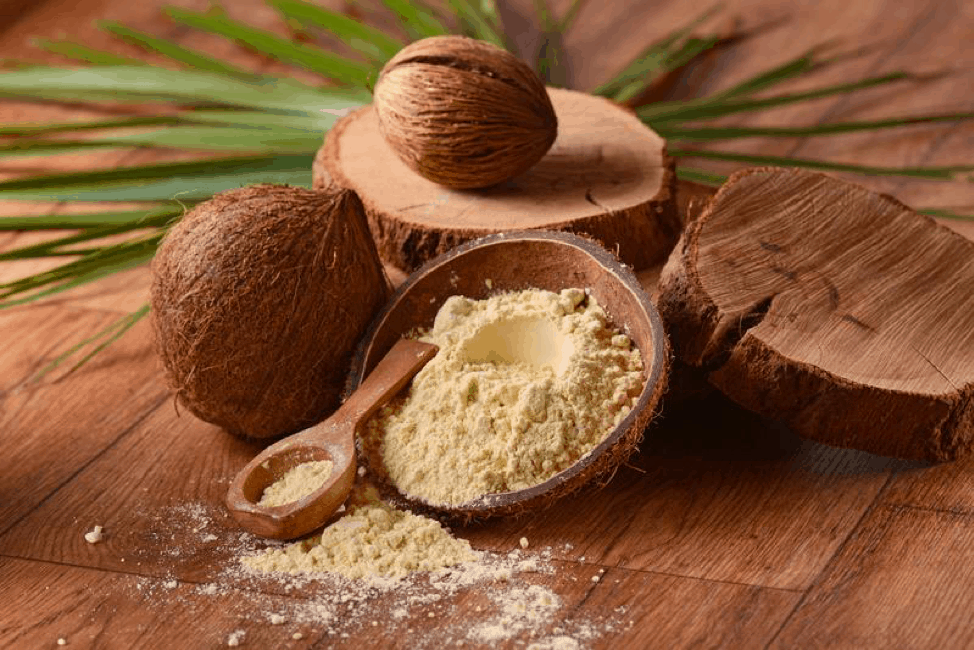White Flour Alternatives With Unique Nutritional Benefits
Flour is a common ingredient, especially in baking. While you may be used to using white flour, there are a number of reasons to consider alternatives.
What is Flour?
Flour, as most of us know, is ground-up wheat. Wheat is made up of three parts, the bran, the endosperm, and the germ.
When making white flour, the flour is refined to contain only the endosperm, the pure starch.
Whole wheat flour, however, utilizes the whole plant, as the name suggests. That means it retains the bran, which contains fiber, and the germ, which contains protein and fat-soluble vitamins.
This means that whole wheat flour contains all the nutrition of wheat, while white flour contains just the starch. Whole wheat flour, then, is a more nutritious flour than white flour.
In addition, because whole wheat flour contains all three parts of the wheat, it’s less ‘processed.’ Foods that are less processed are closer to their whole natural form. Choosing these foods ensures we receive both flavor and nutrition in proper balance.
Beyond wheat flour, there are many other nutritious alternatives you may want to consider for your next recipe. Here are some below
Almond Flour
Almond flour is made from almonds that have been blanched and ground into a flour-like texture.
Almond flour offers significant nutritional benefits over white flour including additional protein, vitamin E, and healthy fats. Almond flour is also rich in fiber.
The benefits of eating almond flour do not stop there. Almond flour is gluten-free and provides healthy sources of iron, potassium, magnesium, and a number of other vitamins and minerals.
It also works well as a flour substitute in batter-recipes, such as cookies, muffins, and pancakes.
Amaranth Flour
Amaranth is a perennial plant that bears flowers in the summer months. The plant has been a staple of many diets for centuries and has recently gained popularity among health-conscious individuals.
A major benefit to choosing amaranth flour over white flour is the antioxidant content. Antioxidants are natural compounds that provide protection for the body against free radicals.
One report on amaranth flour points to the plant’s phenolic acid content. Phenolic acids are antioxidants that can protect against cancer and heart disease.
The best thing about amaranth flour is that it tastes very similar to wheat flour in many baked goods. This allows you to enjoy a familiar taste, while still reaping all the other health benefits of amaranth flour as well.
Coconut Flour
Coconut flour is made from dried coconut pulp that is then ground into flour. Coconut flour is lauded * for its high fiber content, protein, and digestible carbohydrates.
Coconut flour releases sugar to the blood at slower rates than white flour and is less likely to cause a sudden rise in blood sugar.
One thing to note is that coconut flour is dense and absorbs a great deal of moisture. Because of this, it can sometimes be difficult to achieve the desired texture when used for baking. This can be remedied by combining coconut flour with Greek yogurt and a dash or two of vanilla extract.
These were just a few of the nutritious alternatives for those looking for white-flour substitutes. The flours listed above are all great for adding higher nutritional value to dishes while providing a little variety from plain white flour.
Something to note: The high-gluten content of wheat flour yields the best results in recipes that require rising. Wheat alternatives may not measure up in these recipes.
For assistance in making health and diet choices, let Houston Family Nutrition help!
*Disclaimer: Houston Family Nutrition does not endorse any of the individuals featured in the documentary, but we support many of the film’s central messages.




